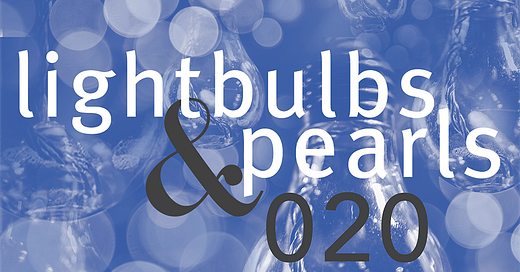Interval Walking, Protein and Anabolic Resistance, Essential Oils to Improve Memory, Purple Passion for Health
Lightbulbs & Pearls | 020
Interval Walking
High-intensity interval training (HIIT) has been in our lexicon for quite some time now. It is a proven aerobic method for improving cardiovascular health, alternating bursts of all-out exertion with brief periods of rest. Since aerobics has always been my weak link, I’ve found HIIT to be an excellent tool for someone like myself who doesn’t particularly enjoy traditional aerobic exercises.
Now I’m excited to try a similar exercise method from Japan that gives aerobic-challenged individuals another effective option: Interval Walking Training (IWT). Developed by Dr. Hiroshi Nose and his team at Shinshu University in Matsumoto, Japan, this modality involves repeating cycles of 3 minutes of fast walking followed by 3 minutes of slow walking. The fast-walking segments elevate the heart rate and engage more muscle groups, stimulating cardiovascular and muscular adaptations, while the slow-walking segments provide recovery and allow the body to adapt to the increased demands.
A recent study found that alternating between fast and slow walking can improve physical fitness and reduce symptoms of lifestyle-related diseases in middle-aged and older adults. In fact, this low-impact IWT increased peak aerobic capacity (VO2max) by about 20%, decreased symptoms of hypertension, hyperglycemia, and obesity by the same amount, and—remarkably—cut participants' depression scores in half.
Furthermore, several studies in Denmark and Japan, which focused on type 2 diabetes, suggest that it has a positive effect on lipid metabolism and other biomarkers. These studies also found that IWT could improve physical fitness with less exercise, implying that IWT can increase physical fitness more effectively.
All in all, IWT is a very achievable, long-term option for anyone—especially older people—who finds it difficult to incorporate enough impactful activity into their daily lives.
Takeaway action: Add interval walking to your movement repertoire for improved fitness.
Prioritize Protein to Counteract Anabolic Resistance
I’ve had the privilege of being close to a handful of older people (and animals) in my life, which has allowed me to study how they age up close and personally. The one common thread that always struck me was that they all seemed to reach a point at which, although their eating habits hadn’t changed, they weren’t able to assimilate nutrients well, and they started to “waste away.” At the time, I wasn’t aware of sarcopenia (muscle wasting), but intuitively, I knew something was happening to the way their bodies used the food that once powered them.
Recently, a lightbulb went off while I was listening to Dr. Stacy Sims, an exercise physiologist, nutrition scientist, and expert in female-specific nutrition and training for health, performance, and longevity, on the Huberman Lab podcast. In discussing nutrition, she stated that as we age, we become anabolically resistant to food; therefore, we need to intentionally increase our protein intake in our later years to counteract these effects.
Anabolic resistance is the reduced ability of our muscles to respond to anabolic stimuli such as protein intake and exercise. It accelerates with age and is responsible for the 3-5% muscle loss per decade after the age of 30. You know that I consider our muscles to be our longevity superpower for many reasons, not least of which is to stave off the dreaded frailty and falls. So, counteracting the inevitable physical changes is a priority.
Knowing we will all have a blunted response to protein as we age guides us to mindfully make wise lifestyle choices. First and foremost, getting enough protein, typically around 1.0 to 1.2 grams per kilogram of body weight, with the exact amount varying by age. Secondly, because inactivity exacerbates anabolic resistance and contributes to muscle mass loss, it is imperative to increase both aerobic activity, such as the interval walking mentioned above, and resistance training that can improve muscle protein synthesis.
Understanding these underlying mechanisms can guide us in developing strategies to mitigate the inevitable physical changes that we will all experience.
Takeaway action: Increase daily protein intake to stay ahead of anabolic resistance.
Diffused Essential Oils Improve Memory
I’m sure I’m not the only person who forgets a name that was on the tip of my tongue, or who can’t remember where I placed something, or what I walked into the room to get. While this level of brain fog isn’t necessarily the beginning of the end, it is something to notice and address, with one answer right under our noses.
Cognitive decline and serious neurological disorders have been shown to be accompanied by or even preceded by a loss of smell, which is not surprising considering the close proximity of olfactory and cognitive functions. For a while, scientists from around the globe have been exploring “olfactory enrichment” treatments that stimulate the brain by rotating a roster of essential oils during sleep cycles.
In 2023, researchers from the University of California, Irvine, published a paper in Frontiers in Neuroscience about a 6-month study that investigated improving memory in people over 65, with stunning results. A cohort of healthy individuals aged 60 to 85 was divided into two groups. The olfactory-enriched group was exposed to seven different essential oil odorants over the course of a week, which were diffused during the first two hours of sleep.
Neuropsychological assessments and fMRI scans were administered at the beginning of the study and at the end of 6 months. At the conclusion, the olfactory enriched group exhibited a staggering 226% improvement in memory! Imagine, by simply diffusing oils for a minimum of two hours a night, you could enhance both cognitive and neural functioning.
If you're interested in the specific oils used, the seven oils were rose, orange, eucalyptus, lemon, peppermint, rosemary, and lavender oils from The Essential Oil Company.
In the paper, the authors cited numerous other studies in this arena that have all concluded similar benefits, which is mind-blowing given the prevalence of adult memory issues. This is a low-cost avenue to boost neurofunctioning, which improves neuroplasticity and overall cognitive performance. I’m searching for beautifully designed diffusers ASAP!
Takeaway action: Diffuse essential oils at night for improved memory and cognitive function.
Purple Passion For Health
As some of you know, our only child is graduating high school, which has set me on a path of lasts at the school I have been very involved with for the past 10 years. One recent “last” was our school’s annual fundraising Gala, always a much-ballyhooed event. This year, my husband and I were honored with the school’s highest award for service and contribution, so I needed to make an extra effort to dress up. As it had a “Super 70’s” theme, I had just the outfit in the back of my closet: a purple suede ensemble that I’ve held on to for 40 years.
Yes, purple suede. For some reason, I loved purple as a teenager and well into my early 20s. It’s a penchant I may have acquired from my mom, who painted our freezer a light lilac…which I wouldn’t recommend anyone do. Anyhoo, all these decades later, purple continues to be a consequential color in my life.
Although it’s a proclivity that started in my youth, I’m now applying this love of purple to food, and rightfully so. Purple foods contain anthocyanins, a flavonoid pigment responsible for the crimson red, indigo blue, and vibrant purple colors in fruits and vegetables. This deep-colored compound is known for its antioxidant and anti-inflammatory properties, which can prevent and reverse the aging process of blood vessels and have the potential to reduce the risk of heart disease, cancer, and type 2 diabetes. They may even have a positive effect on memory and brain health.
Blueberries, one of my daily staples, provide one of the richest sources of anthocyanins. They are also prevalent in many other fruits and vegetables, including blackberries, cherries, grapes, plums, acai berries, pomegranates, elderberries, purple carrots, purple cabbage, purple sweet potatoes, and my personal favorites, black beans, purple rice, and kalamata olives.
The moral to this pearl: choose purple to live well, age great.











